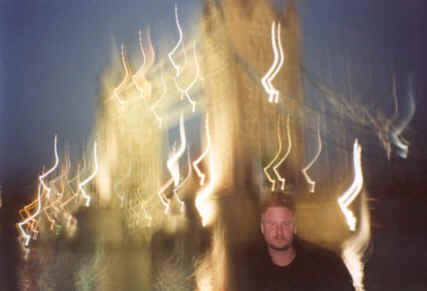|
I grew up Catholic in a mining town in Northern Ontario, Canada. In my family there was no talk, good or bad, about sex, intimacy, love... Gay people did not exist in any public consciousness. Though I was called a fag for the entirety of high school, I don't think most guys who tried to hurt me with this label actually thought that I would grow up to love having sex with men. To be a fag was to be cursed as weak and unimportant. When I first met gay people, around the age of 16, I didn't identify with them. My sexual fantasies and feelings were not very specific. I was indeed attracted to girls and enjoyed kissing them. I have learned that my sexuality, like everyone else's, is unique and changing and amazing. In general people are fearful and uninitiated in the mysteries and wisdoms of gender and sexuality. The dominant media-biased cultures delight in the confusion of girl-boy, good-bad, gay-straight dualities, which they misrepresent as a non-choice that has already been made and must be obeyed. Sex magic is the art of balancing and integrating duality and complexity. Sex magic is learned through curious play, ruthless inquiry, and challenging practice. Being limited by strict roles of sexuality and gender expression does not lead to magic or healing. To heal is to make whole is to embrace all. Discovering the inner man, woman, and child is only the beginning. Try exploring and integrating the inner and outer butch, femme, monk, whore, healer, perpetrator, destroyer, exhibitionist... Taoism, the ancient and contemporary practice from China gives us the gift of the Yin/Yang which illustrates duality in motion, each containing the other, swirling around a common center, creating a whole. Teenagers the world over are attracted to this image. I think their psyches respond favorably to this image which is so radically opposite to the culture of gender roles and sex oppression that squeezes youth into extremely limited spaces to express themselves and doles out harsh punishments for coloring outside the lines.
When I felt most pressured to choose a sexual identity I chose Bisexual because I felt that it was the box with the most interesting and diverse people. There were more anarchists and performance artists and feminist sex workers in the bisexual box so I felt more at home. I also thought that the bisexual box was not very clearly defined so it seemed like the fewest people in the largest possible space. During the bisexual revolution of the late 80's I found myself alienated from the increasing militancy of bi identity. I felt the box get smaller and more crowded. Simultaneously I was challenging my own internalized homophobia and I questioned my resistance to claiming gay and fag as an identity since they more clearly represented my primary sexual practice, being a guy who enjoyed having sex with guys. At this time the word queer came to prominence, not without some ongoing controversy, and I found a new space. More inclusive and more widely defined. Queer was a liberating identity for me. I got to associate myself with all manner of sexual and gender diversity while simultaneously enjoying a mass political solidarity, for being queer was to be in resistance to anything that someone else thought we should be.
Mostly I think labels are as comforting as they are dangerous. Freedom is not about labels although I think the path of liberation does involve self-definition and the intentional taking of names and joining of communities. At our best we strive to be ourselves, unique in our genius, beauty and potential, within a global network of families and communities, places where we feel at home. As an artist I have felt the most inspired and free when I am testing the bounds of my families and communities. I think that artists have a responsibility not only to give voice to their history and community but also to expand that voice, through experimentation and integration. I am most drawn to artists who transgress genres and identities to reveal new perspectives and potential of human behavior and expression.
-- Keith Hennessy

Dr. Rob at the Tower Bridge in London
|